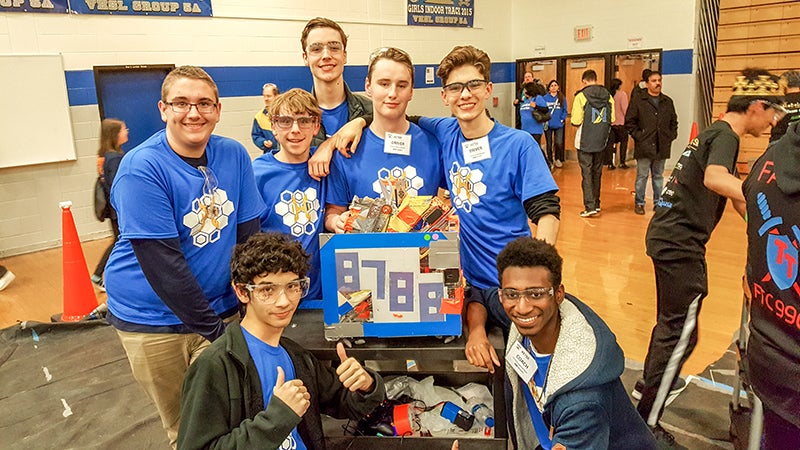NSA robotics to compete in world championship
Published 10:10 pm Thursday, February 7, 2019

- Nansemond-Suffolk Academy’s Hexadecimal robotics team was one of the top nine teams at the FIRST Tech Challenge Virginia State Championship Feb. 2 who qualified for the FIRST World Championship in Detroit from April 24-27. (submitted photo)
The coach and members of Nansemond-Suffolk Academy’s Hexadecimal student robotics team said they were stunned to qualify for the world championships in just the fifth year of the team.
The Hexadecimal team was among the top nine performers at the FIRST Tech Challenge Virginia State Championship at Atlee High School near Richmond that earned a trip to the FIRST World Championship in Detroit April 24-27.
“It really didn’t set in for me until probably after a day and a half or two days. It was just awesome. I couldn’t get over it that we were going to worlds,” said junior Aaron Eure, 16, who is in his third year on the team.
In one way, it was almost anti-climactic, according to senior Davis Lydon, 17, because the team had to go into a tiebreaker — which the Hexadecimal team won handily — to determine who would advance to the international tournament. Still, 18-year old senior Michael Chen said they were all proud to have qualified.
“To be selected to go to the international competition against all these world-contending teams that get so much more funding, have so much more resources, have so much more time than us, it’s incredible, to say the least,” Chen said.
This year’s contest required students to design and build a remote-controlled robot that could retrieve items on a simulated alien planet. The rules require teams to design, build, program and operate robots to compete in a head-to-head challenge through forming alliances with other teams. Teams are also scored on community service and on keeping an engineering notebook. Competitions last most of the day.
Each match goes for about two minutes and 30 seconds, with the first 30 seconds requiring competitors to have their robots move by hard-coded directions — meaning no controllers can be used. For the next two minutes, competitors can operate the robots with the controllers. The alliance with the most points wins the match.
The team’s coach, Bill Sanford, said they were excited just to have qualified for the state tournament, much less be one of the nine teams to advance to the international competition.
“To advance past that, it wasn’t something I really thought of,” Sanford said. “I think they would have been pleased just to make the state championship.”
To prepare for the world championship, the team will dismantle most of the robot in order to make improvements, which will be among the costs for which the team will be fundraising, including the $2,500 registration fee for the tournament.
The 42-pound robot is in one of the classrooms, and on the whiteboards the team has written a list of objectives over the next two months before the international competition, and then some conceptual drawings on how they will pick up the minerals and put them into the lander.
Lydon said there’s plenty for spectators to watch as the competition unfolds.
“Even watching teams that you don’t know, seeing what could happen if they come back from a deficit at the beginning, or if a robot falls apart but his teammate still scores so well that they still win,” Lydon said, “it’s (in) those exciting moments that you don’t really know what’s going to happen because these are just our creations. They’re not perfect.”
Still, for Chen and the other members of the team, they said being a part of the robotics team has been a rewarding experience and worth the cost.
“The team dynamic itself, honestly, is something that you just can’t pass up,” Chen said. “And being able to participate in all of the STEM-related outreach has given me inspiration to continue that going forward. The team itself is filled with some of the brightest minds I’ve ever collaborated with, and the challenge in being able to work with teams from all around the world, it’s almost indescribable how wonderful the experience is.”





